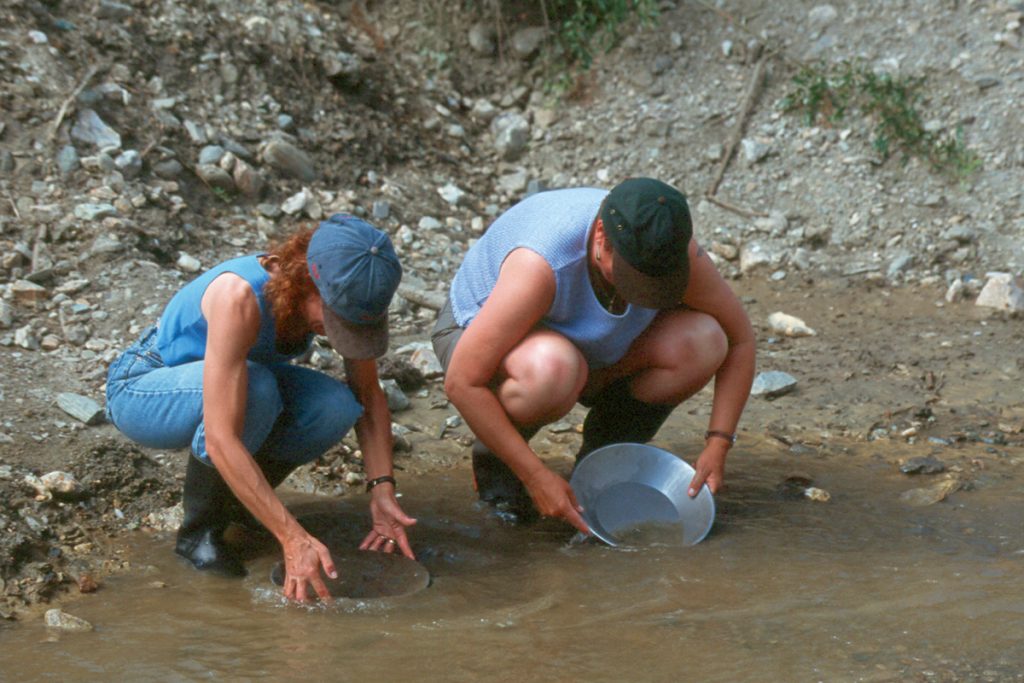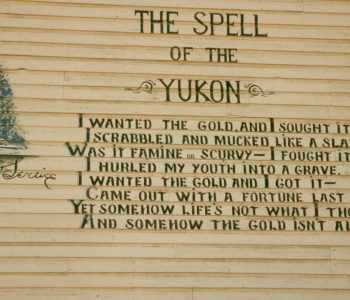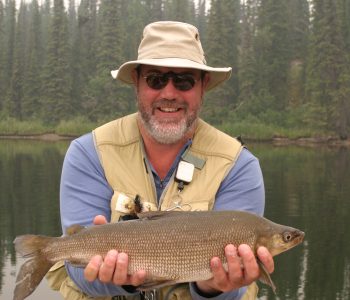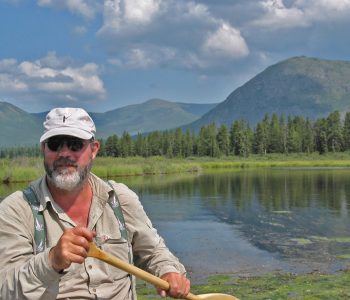
The world’s last great goldrush
Before 1896, only First Nations peoples and the hardiest of fur traders, prospectors, missionaries and North West Mounted Police officers ventured into the Yukon Territory. But in two short years, the people, the history and even the landforms of Yukon would be profoundly altered. From a pre-gold rush figure of fewer than 5,000 people, the population of Yukon would soar to over 30,000 in 1898. And a land, which had not even been drawn on maps one century before, would become the place to be in North America, and arguably the world.
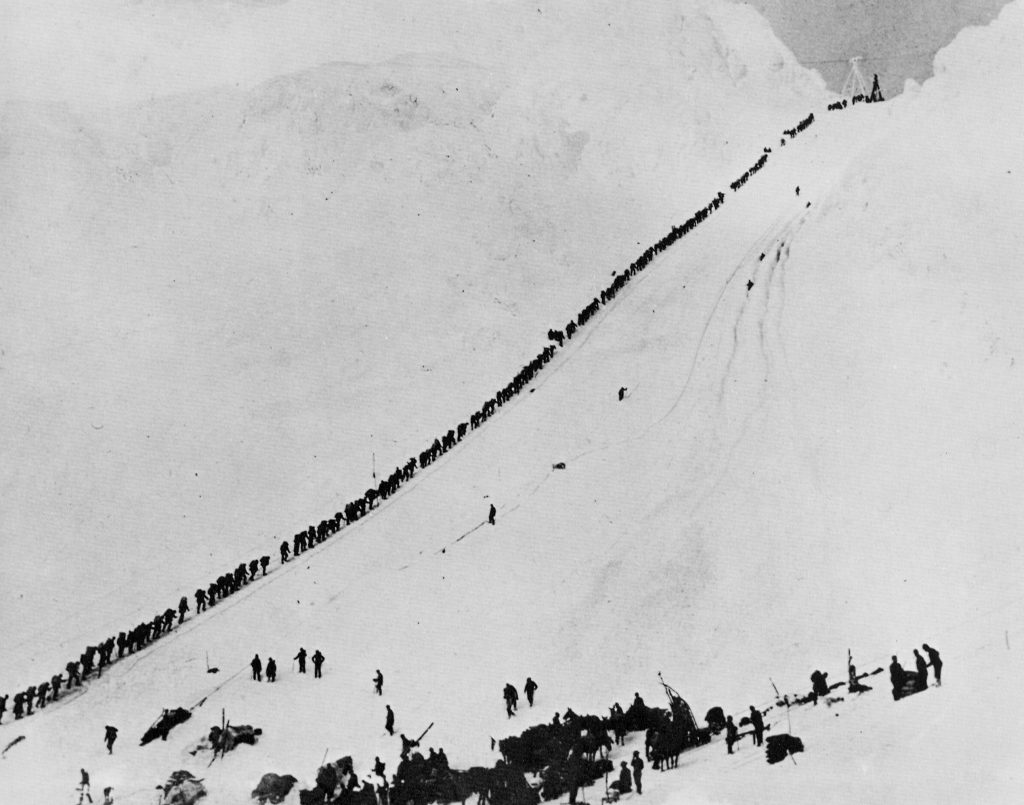
The Klondike Gold Rush was the most publicized gold rush in history. Newspapers and magazines were filled with the tales of Yukon adventurers, miners and mounties, and the hardships and windfalls of the gold rush stampeders. The Klondike attracted, and was immortalized, by m any of the best writers of the era including Jack London, Robert Service and Tappan Adney. The characters surrounding the Klondike Gold Rush are still the stuff of legends and dreams. The discovery and discoverers of gold in the Klondike continue to be surrounded by controversial and sometimes conflicting stories.
According to the oral traditions of the Tagish First Nations people, the gold rush story begins when Skookum Jim, Dawson Charlie and Patsy Henderson travelled down the Yukon River from Tagish, in the southern Yukon. They were looking for Jim’s sisters Shaaw Thia, also known as Kate, was George Carmack’s wife. Well before his trip to the Klondike, Skookum Jim had a dream in which his spirit helper, frog, appeared in the form of Wealth Woman. She gave him a golden walking stick and told him he would discover his fortune in the north.
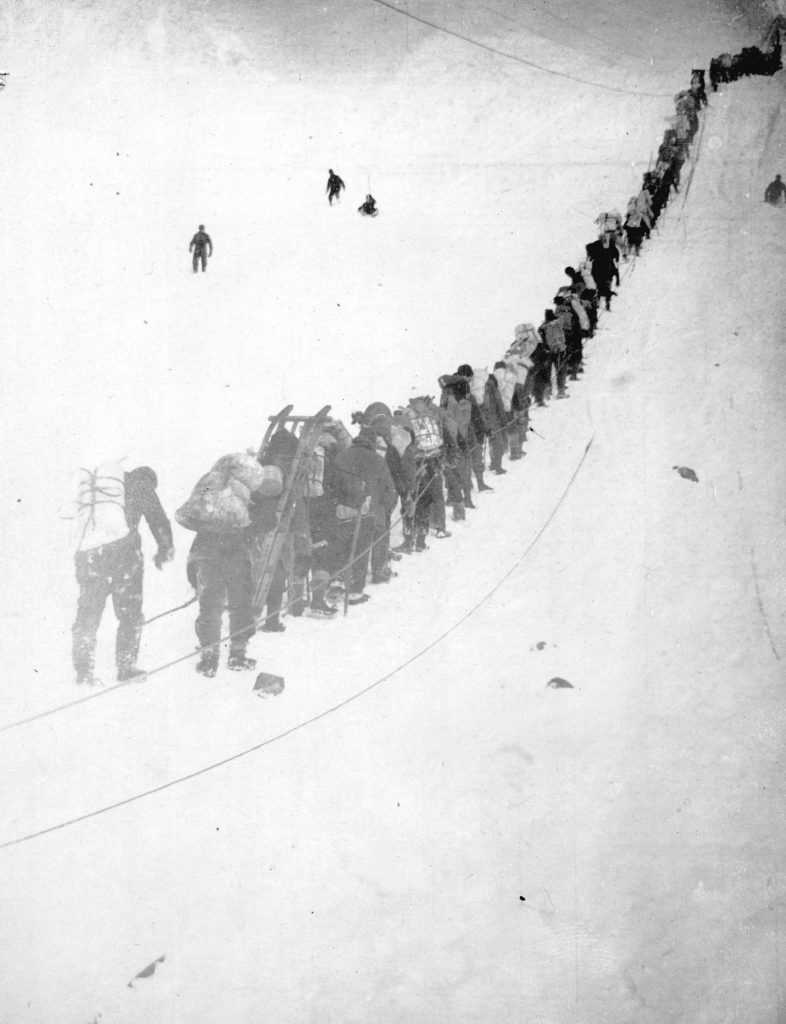
After finding Kate and George Carmack, Skookum Jim and the others were fishing in the Klondike River. It was July when veteran fold-seeker Robert Henderson approached the group and told Carmack about some good prospects he had found on Gold Bottom Creek in the Klondike River Valley. According to the unwritten code of the miner, Henderson had to share his knowledge of potential finds with whomever he met. Carmack asked whether there was a chance that he could stake a claim. In a voice that was overheard by Skookum Jim and Dawson Charlie, Henderson replied that Carmack was welcome, but not his First nations brothers-in-law.
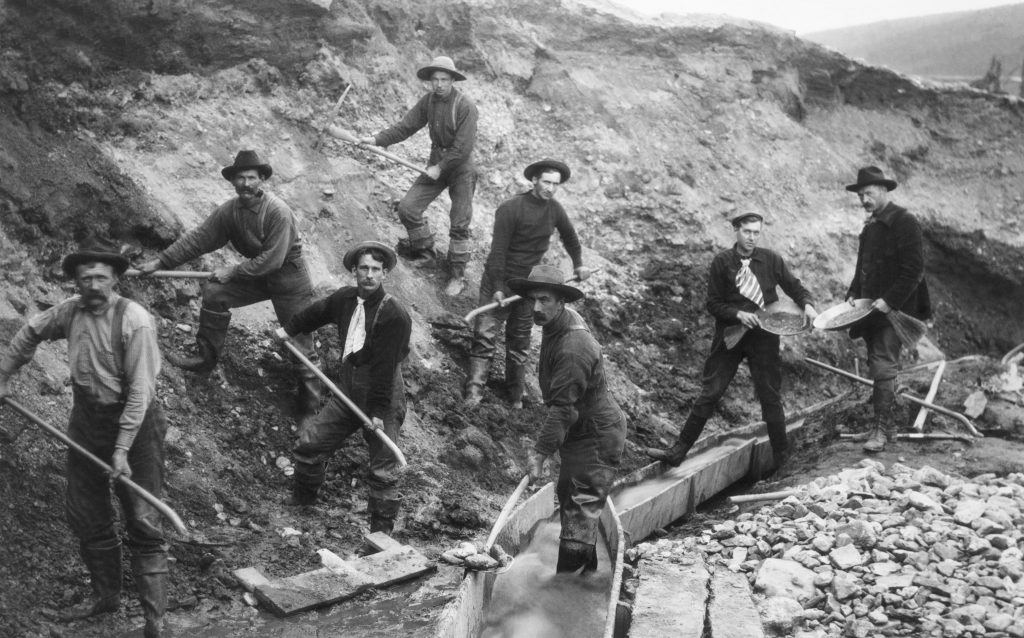
In early August, the group poled their boat up Rabbit Creek, a tributary of the Klondike. They went over the dome that separated the creeks and visited Robert Henderson’s camp at Gold Bottom. Henderson once again insulted the First Nations men by refusing to sell them tobacco. “His obstinacy”, Carmack later recalled, “cost him a fortune.” The group headed back to Rabbit Creek and panned out a few encouraging traces of gold. Then, in place where the bedrock was exposed, someone found a nugget the size of a dime. Energized by the find, they turned over loose pieces of rock and found gold that, according to Carmack, lay thick between the flaky slabs like cheese sandwiches. The date was August 16, 1896.
George Carmack, Skookum Jim and Dawson Charlie staked their claims the next day and renamed the creek “Bonanza”. The men headed downstream to the community of Fortymile to register their claims, but they never travelled over the dome to tell Henderson of their find. Henderson stayed on Gold Bottom Creek for another three weeks. By the time he caught wind of the great discovery, the best locations on Bonanza Creek had been staked.
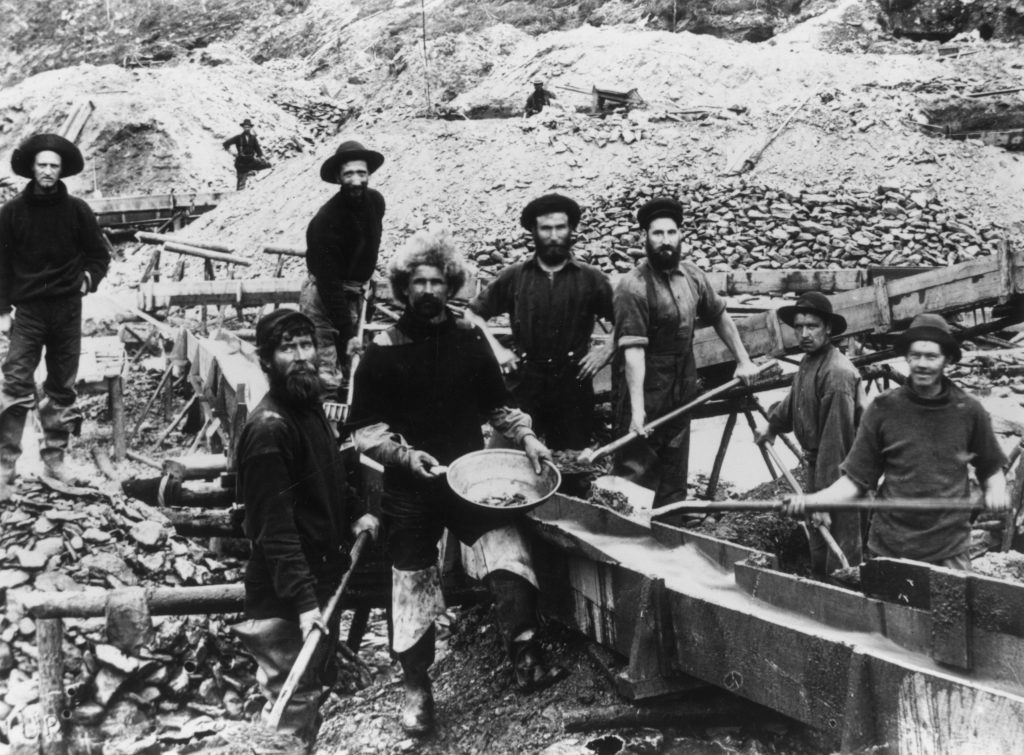
A staking rush began that brought prospectors from all over Yukon and Alaska. On August 31, 1896 gold was discovered on Eldorado Creek, a tributary of Bonanza. Eldorado was no more than five miles long and produced over 30 million dollars worth of gold (an amount estimated at 3675 million U.S. in 1988 dollars).
But the world didn’t know what was happening in Yukon until July 14, 1897 when the steamship Excelsior landed in San Francisco. On board was over a half a million dollars worth of Klondike gold. News of the great discovery travelled over the wires like wildfire. When the steamer Portland landed in Seattle three days later a crowd of 5,000 greeted the 68 miners on board. Over a million dollars worth of gold was carried down the gangplank in a battered assortment of suitcases and rope-tied bags.

The Klondike Gold Rush was on.
It’s a matter of ongoing speculation why the Klondike Gold Rush captured the imagination of so many people. The world was under the influence of severe recession at the time. The idea of the North American frontier, which had brought so many people from the Old World to the New, was still a fresh concept in the minds of the American populace. This was the land of the entrepreneur, the adventurer, the innovator and the fortune hunter.
In a time where there was little food news, the press played on the sensational wealth of the Klondike prospectors and created the idea of a land where riches just lay in the ground for anyone to dig up and carry away. Tens of thousands of people took the bait, and they packed their bags for Dawson City. Steamship companies were swamped with enquiries, suppliers couldn’t keep up with the demand for Klondike outfits and newspapers debated the relative merits of the different routes to the Klondike.
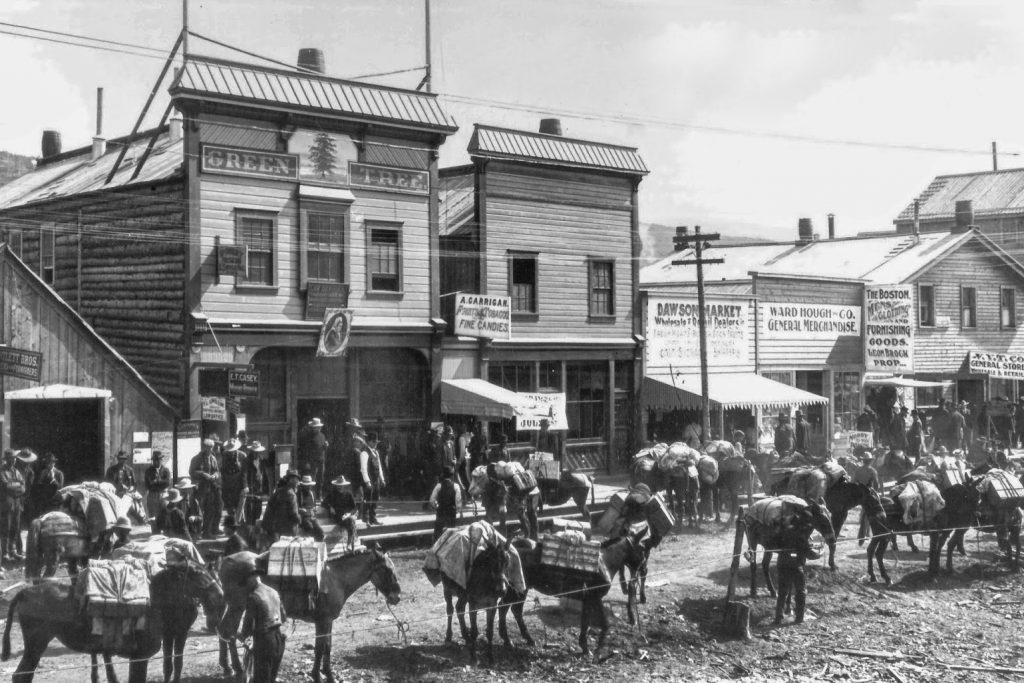
Although steamers could travel along the Inside Passage, around the cost of Alaska and then up the Yukon River all the way to Dawson City, this route was very expensive and it was nearly impossible to book a ticket on the Yukon River boats. Among the other exhausting and often life-threatening routes to the Klondike, it was the Chilkoot and the White Pass trails that became the most popular paths to Dawson City.
From the start of the Chilkoot Trail, at Dyea, to the end, at Lake Lindemann, was only a distance of 32 kilometres (2Omi) – but it was a climb of 1,067 meters (3,500 ft), some of it at a nearly 40 degree angle. The White Pass was not as steep, and it was lower than the Chilkoot, but it stretched over 72 kilometres (45 mi).
At the top of the Chilkoot trail, on the summit of the pass, was a wind blasted NWNP post that enforced the policy that each stampeder had to carry one year’s supply of food and living materials into Canada. This amounted to close to one tone of live saving supplies. Thus the treacherous trail was made even more arduous (and tedious) by the fact that the average stampeder needed to make this trip 20 times in order to ferry all of his of her goods to Lindemann.
The stampeders who made it over the Chilkoot and White Pass gathered at Lake Lindemann and Bennett Lake in the winter of 1897/8. They still needed to travel over 800 kilometres (500 mi) to Dawson City, but the rest of their journey would be by water. A flurry of boat building denuded the surrounding hillside of trees. When the ice went out on the lakes on May 29 of that year, a rag-tag flotilla of 7,000 barges, rafts and homemade plank ships began their journey to Dawson.
When this armada reached Dawson they discovered that all the claims had been staked two years before. Many of the stampeders headed back as soon as they arrived. Others stayed and found wealth in different enterprises.
Fortunes were made in Dawson, but many were also lost. Some of the richest Yukon citizens were the business people who sold the stampeders goods and services. There was no shortage of moneymaking schemes and the desperation that fuelled them – a couple of entrepreneurs even hit on the idea of sifting gold dust from the dirt beneath the floors and foundations of the saloons.
In 1898, the confluence of the Yukon and Klondike Rivers had been transformed from a small fishing camp used by the Han First Nations people, into Dawson City, the largest and most cosmopolitan Canadian city west of Winnipeg. On sale in the streets of Dawson were French champagnes, oysters, the finest Paris fashions, porcelain, parasols, lacquer work and imported delicacies.

But the Klondike Gold Rush ended as quickly as it began. In the summer of 1899, gold was discovered in the sandy beaches of Nome, Alaska. Many of the people who had arrived too late to stake claims in the Klondike left immediately for the “new Eldorado”. Ironically, the greatest year for gold production in Yukon was 1900. Over 22 million dollars worth of gold was extracted, in contrast to the $2.5 million of 1897 and the $10 million of 1898.
The Klondike Gold Rush marked the end of a decade and the end of an era. Soon after, gold mining was taken over by corporations and government who could make the investment in complex machinery.
The Klondike Gold Rush brought out the best and the worst in the people that followed its call -it remains a fascinating enigma to this day. One of the last manifestations of the dream of the North American frontier, the Klondike was seen as a place where any person could make his or her fortune by exploring unopened territory. The concept of frontier has become a myth or an idealized notion. But the vestiges of the Klondike quest are still to be seen and sensed in the landmarks of Yukon – from the summit of the Chilkoot Trail to the boardwalks of Dawson City.
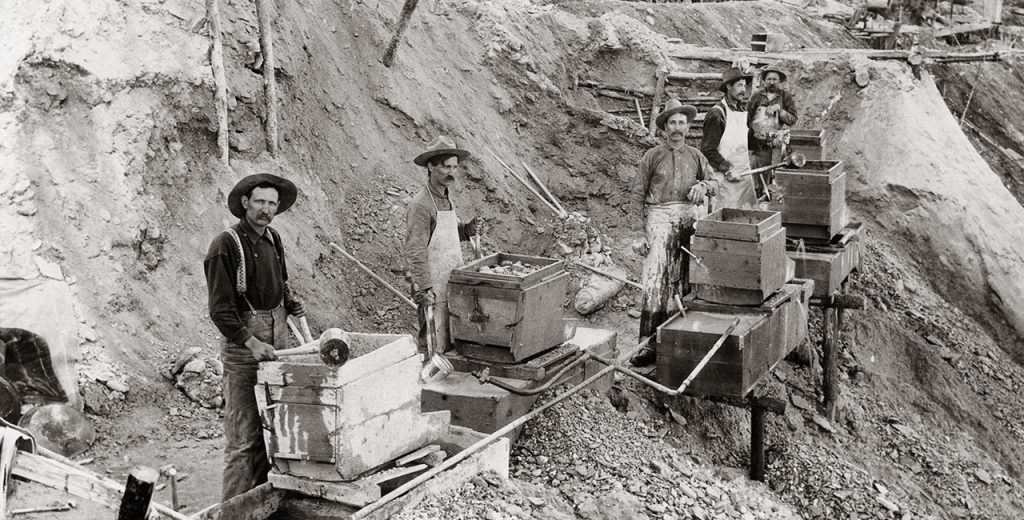
THE KLONDIKE GOLD RUSH TIMELINE
- August 16, 1896
Discovery of gold in the Klondike by George and Kate Carmack, Skookum Jim and Dawson Charlie. - August 17, 1896
George Carmack, Skookum Jim and Dawson Charlie stake their claims on Bonanza Creek - August 31, 1896
Discovery of gold on Eldorado Creek (a tributary of Bonanza). - September 1896
All of Bonanza Creek is staked and many claims are already producing rich harvests. - Spring 1897
The Population of Dawson grows to approximately 1,500. - Summer 1897
The population of Dawson grows to approximately 3,500. - July 14, 1897
The steamship Excelsior arrives in San Francisco with a half a million dollars worth of gold on board. Stories of the Klondike Gold Rush hit the news wires. - July 17, 1897
The steamship Portland docks in Seattle and 68 miners unload one million dollars worth of gold in front of a crowd of 5,000. - October 1897
A Seattle newspaper prints and eight-page Klondike edition which is sent to every postmaster and public library in the country and to thousands of businessmen and politicians - Summer and Autumn 1897
Portland, Victoria and Vancouver arrive in Dyea and Skagway, Alaska or steam directly up the Yukon River to Dawson City. - Autumn 1897
Oliver Millett of Lunenburg, Nova Scotia stakes on claim on Cheechako Hill, far above Bonanza Creek, and it produces a half a million dollars worth of gold. A staking rush of the nearby hills begins. - Winter 1897/98
The Chilkoot and the White Pass trails reach their zenith of stampeders scrambling towards the Klondike. Among these is writer Jack London who trudged over the White Pass. - April 1898
An avalanche kills over 60 people on the Chilkoot Trail. - Spring 1898
The population of Yukon peaks at over 30,000. Dawson City the largest Canadian city west of Winnipeg. - May 29, 1898
The ice on Lake Lindemann and Bennett Lake goes out and an armada over 7,000 boats begin their water journey to Dawson City. - June 13, 1898
Yukon is made a Territory. - July 1898
Skagway, Alaska shyster Jefferson “Soapy” Smith is killed by Frank Reid in a shoot out. - Summer 1898
The Yukon Field Force, a Canadian army force of 200 soldiers and four nurses is sent to the Klondike to maintain sovereignty of Yukon and assist the North West Mounted Police in keeping the peace. - April 1899
More than a million dollars worth of property and 117 buildings are destroyed in a fire in Dawson City. - July 1899
The first White Pass and Yukon Route train runs from Skagway, Alaska to Carcross Yukon. A year later, the line is completed to Whitehorse - Summer 1899
Gold is discovered on the beaches in Nome, Alaska and the next gold rush begins. The Klondike Gold Rush is officially over. - 1900
The year of greatest Klondike gold production. Over 22 million dollars worth is pulled out of the creeks. $2.5 million was pulled out in 1897 and $10 million in 1898. - 1901
Prostitution and gambling are outlawed in Yukon. - 1921
The population of Yukon has dropped to just over 4,000 – nearly half of which are of First Nations descent.
